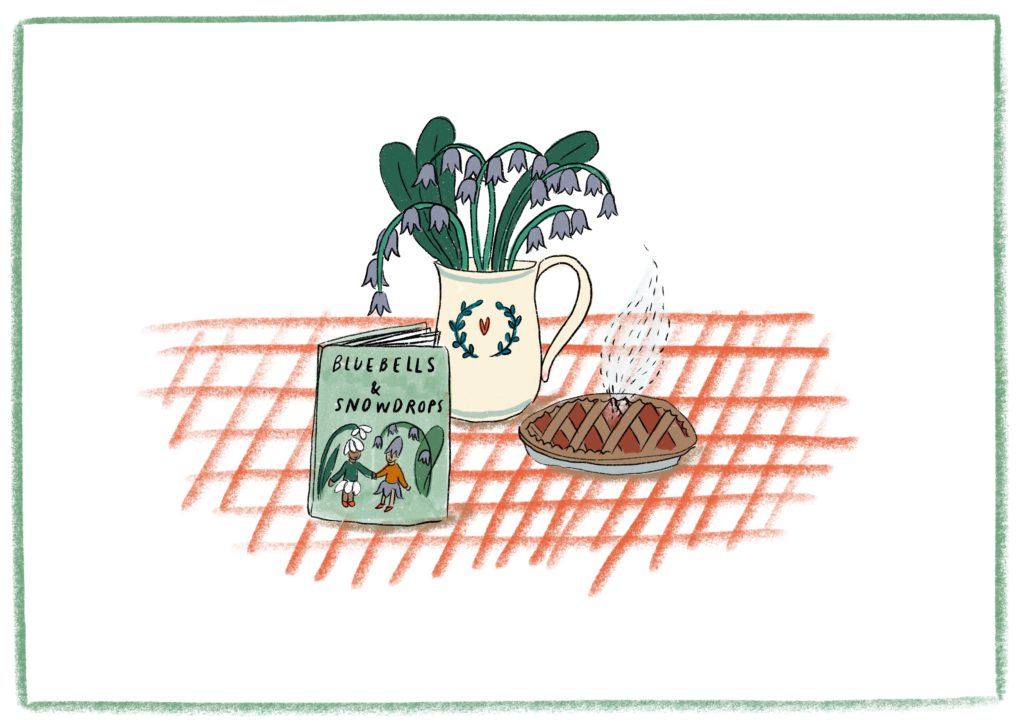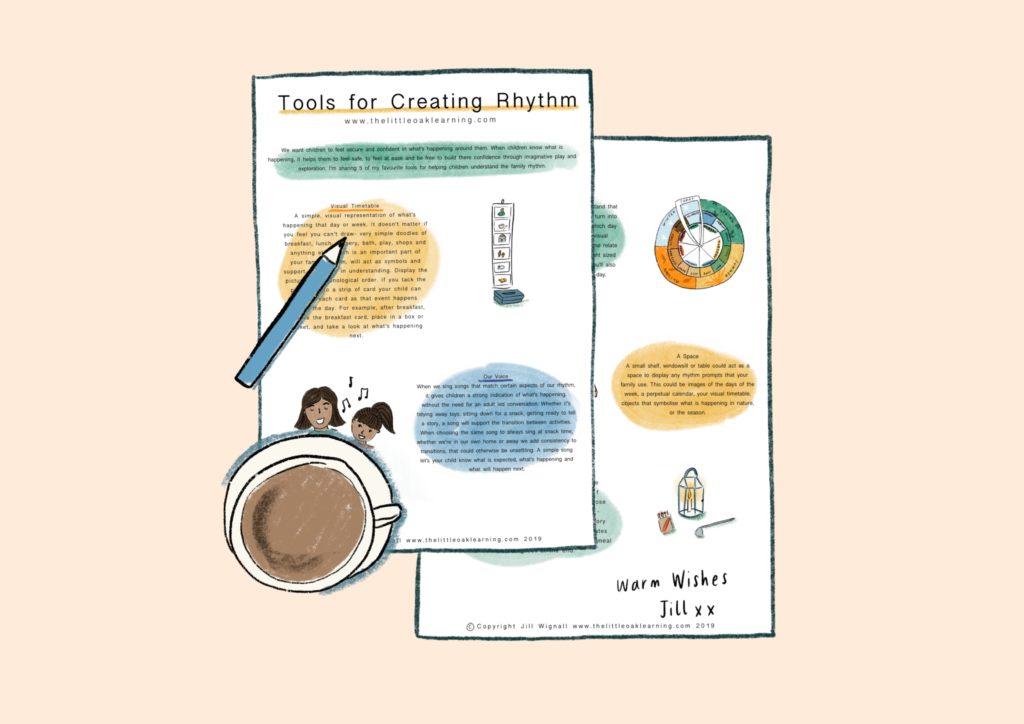categories
Rhythm of the Day, Week, Month and Year

When we are trying to become more aware of rhythm, we want to understand it in a way that supports and guides us, rather than restrains or restricts us. We can think of rhythm as the flow of day and night, the weeks, the months (or moon cycles), the seasons and the year. I’ll share about each of these rhythms and how they may look, what we may notice about each, aspect that you may wish to incorporate into your family rhythm.
Days
The rhythm of each day flows between waking, eating, playing and sleeping. Each day begins with waking up and each day ends with falling asleep. These are strong markers for a child and the rhythm between day and night, may be the one children recognise most. We have anchors throughout the day. These anchors often serve as moments of coming together, not you are necessarily separated from each other the rest of the time, but we can think of these anchors as moments of intention, connection and gratitude. They are things like a meal time, a story time or circle time, an activity you choose to do together, a bedtime routine. Between these anchors are spaces for free play, being outside and exploration. We can think of these two shifts of mood as contraction and expansion, or in breath and out breath. The anchors are contraction, or in breath. The time between is expansion or out breath. It’s important for children to experience a balance of both.
Weeks
The rhythm of the week may be centred around trips, activities, household tasks, meals and other aspects that are of importance to your family life. The weekly rhythm begins to take shape when we look at the main task or activity of each day. Monday may be a trip to a playgroup, Tuesday may be a day at home with a visitor, Wednesday may be a day at home together, Thursday a trip to a park or natural space, Friday is a day at home preparing for the weekend and running a few errands. It’s quite possible that your child goes to nursery or school a few days a week, or perhaps they have a childminder whilst you work, a parent in another home or other adults involved in their care. These aspects will all create important parts of the weekly rhythm. We can look at the weekly rhythm by writing down the non-negotiable activities that happen each week. We can see where the space lies around those activities and what would be the best way of using that space to create times of inbreath, outbreath, or whichever your child needed, depending on they spend their time away from you. For example, if every Tuesday and Thursday your child is in nursery, and every Wednesday they are with another family member, if possible it will be worth discussing suitable activities that are gentle, restful and connected, to give your child moments of expansion after the intensity of nursery. We are trying to achieve a flow between the days of the week and the activities each day. This flow ebbs like tide.
Months (or moon cycles)
Months are not the most important rhythm in my eyes. Mostly because they are quite an abstract concept for young children to grasp. Months are a measure of time (and those measures change from month to month – sometimes 28 days, sometimes 30, sometimes 31…) which can be a confusing concept in the early years.
Similarly to the rhythm of the week, there may be certain events which happen each month. Perhaps there are visits or events that you do occasionally. Would it be possible to do those once a month, creating more rhythm and consistency? Certain months may bring with them certain celebrations, and in regions which do not experience the four seasons, to be aware of the months could be quite helpful. For example, “When it is July it is your and Daddy’s birthday”. As a teacher I had a sort of calendar on the wall listing the months, and next to each month was a photo of each child who’s birthday it was that month. It acted as a helpful visual to support the children understand the months.
Seasons
Seasons are a helpful rhythm in grasping the cycle of the years. The visual and physical experiences of the changes of nature are symbolic to children (and adults). We see certain plants grow at certain times of year, we experience different weather in different seasons. And with these changing seasons come different traditions, meals and ways of life. Here in England, summertime is (usually) warm and sunny. It’s a time of being outside, playing, long days, light and fresh meals. In nature we experience the sea and beach, flowers, growth, birds and butterflies. Contrastingly, winter brings time indoors, trying to stay warm, hibernating animals, dark, short days, snow and frost. Similarly spring and autumn bring their own unique features of the season. When we observe these changing elements, when we embrace them, and don’t push against them, our way of life changes from season to season. We find ourselves slowing down as we leave autumn and enter winter. The arrival of spring sees us awakening of our slumber like the plants and animals around us. Nature is a wonderful rhythm and when we pay attention to the natural rhythm around us, whether that be seasonal or not, we feel a sense of groundedness and belonging as we ‘go with the flow’.
Years
There are annual celebrations and events which only come around once a year. Many families celebrate birthdays, as well as religious and spiritual holidays, cultural celebrations and seasonal celebrations. Within my culture and community we celebrate birthdays, solstices and equinoxes, Christmas (a family gathering) as well as natural sightings such as the time when we gather bilberries, or when the bluebells come out and brighten up the woodlands and hillsides. I like the idea of adding to these annual celebrations by building on our traditions. For example, you may always go for a walk to see the bluebells in the woodlands, but it would be nice to celebrate that annual traditional with a few little rituals or traditions, such as reading a story about bluebells, making a seasonal dish, or gathering a handful of bluebells to display in a vase at home. These little rituals and traditions all add to the rhythm of the year.
If all these thoughts about rhythm have you wanting to explore and consider your own family rhythm. Then you may like to read my Tools For Creating Rhythm a try. I share my 5 low cost tools for bringing more rhythm to your days. Get your copy here.

CATEGORY
8/09/2019
COMMENT LOVE